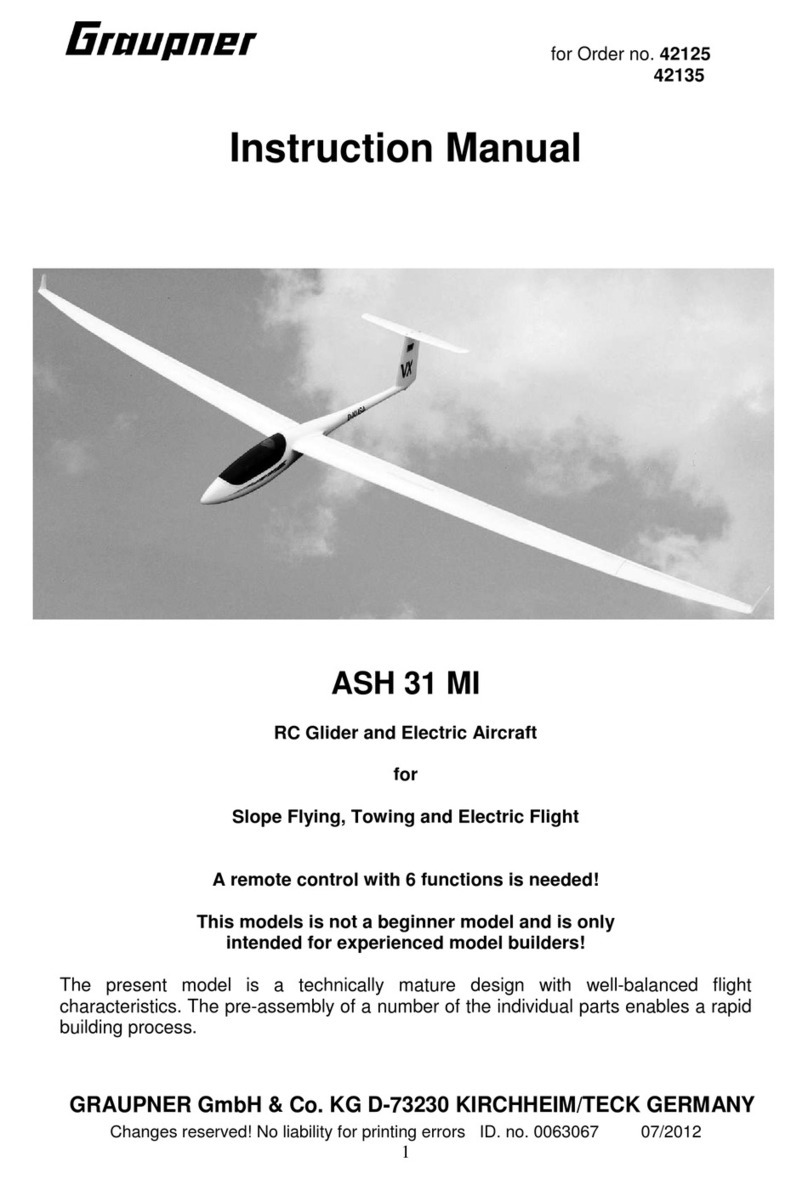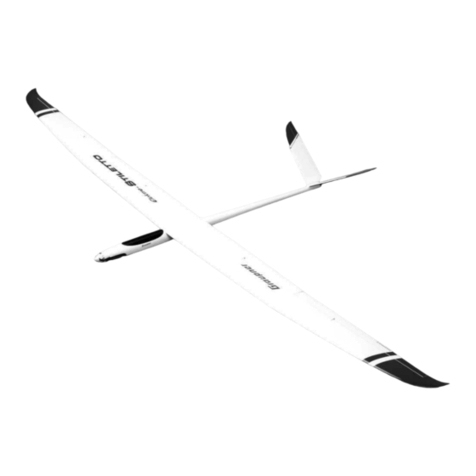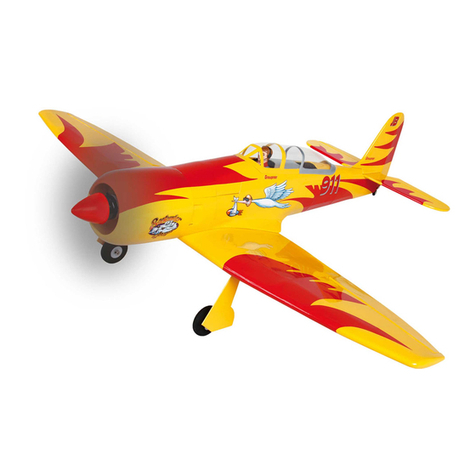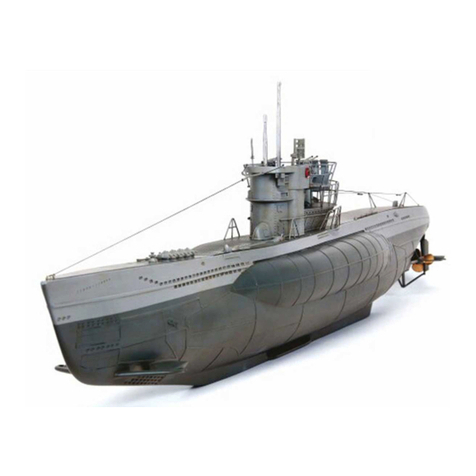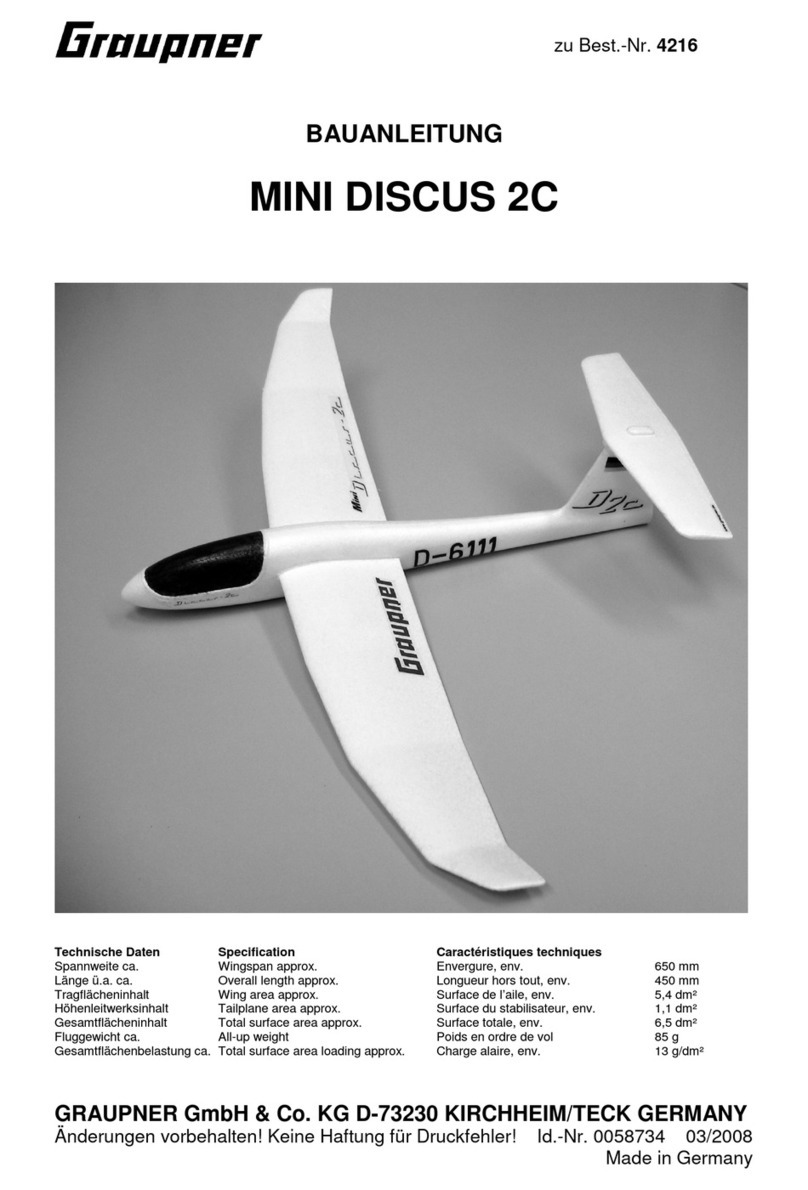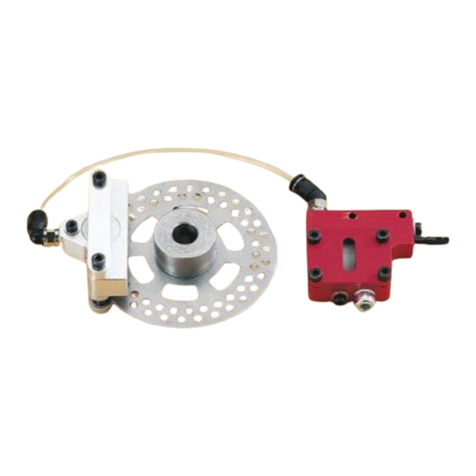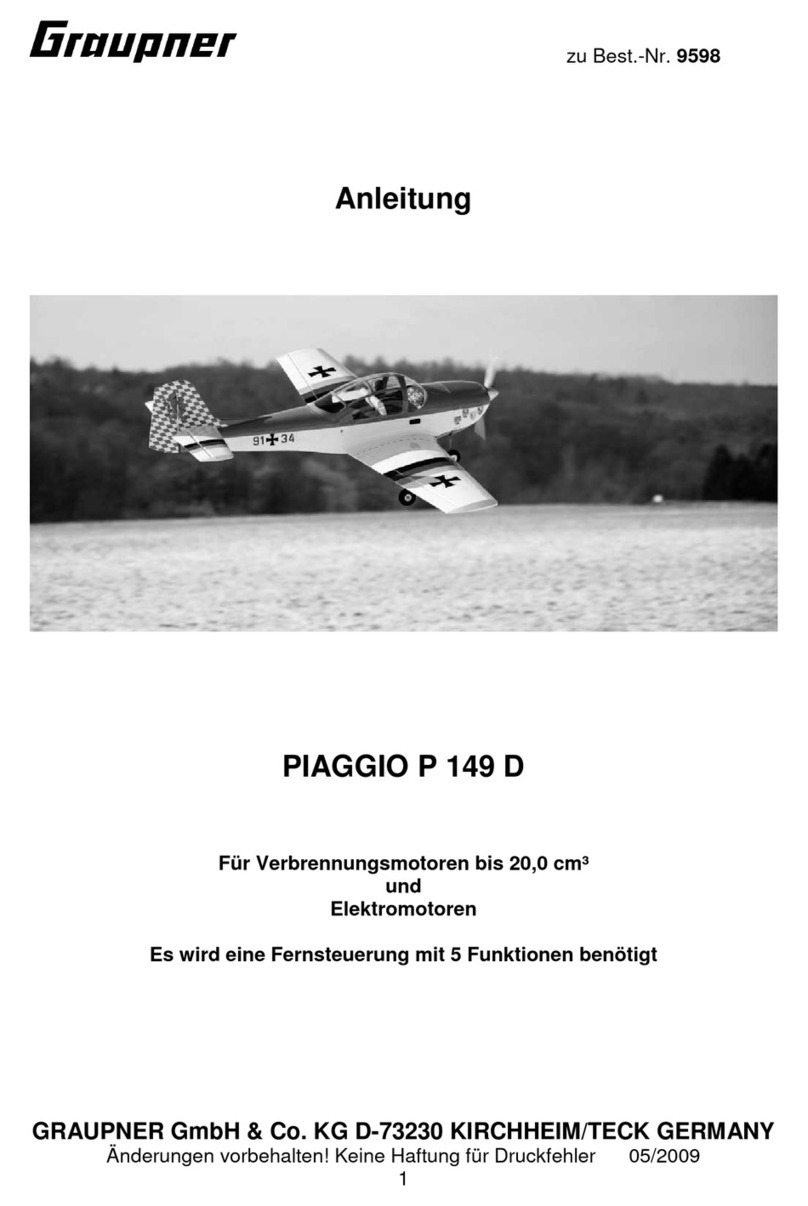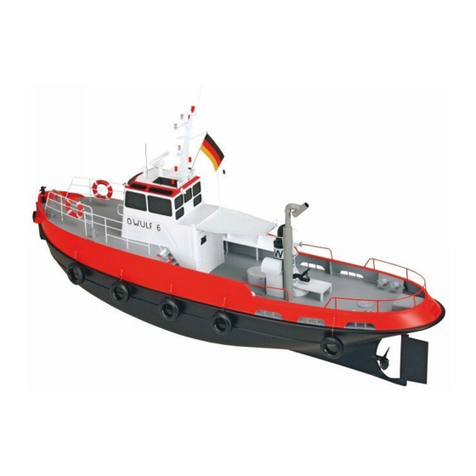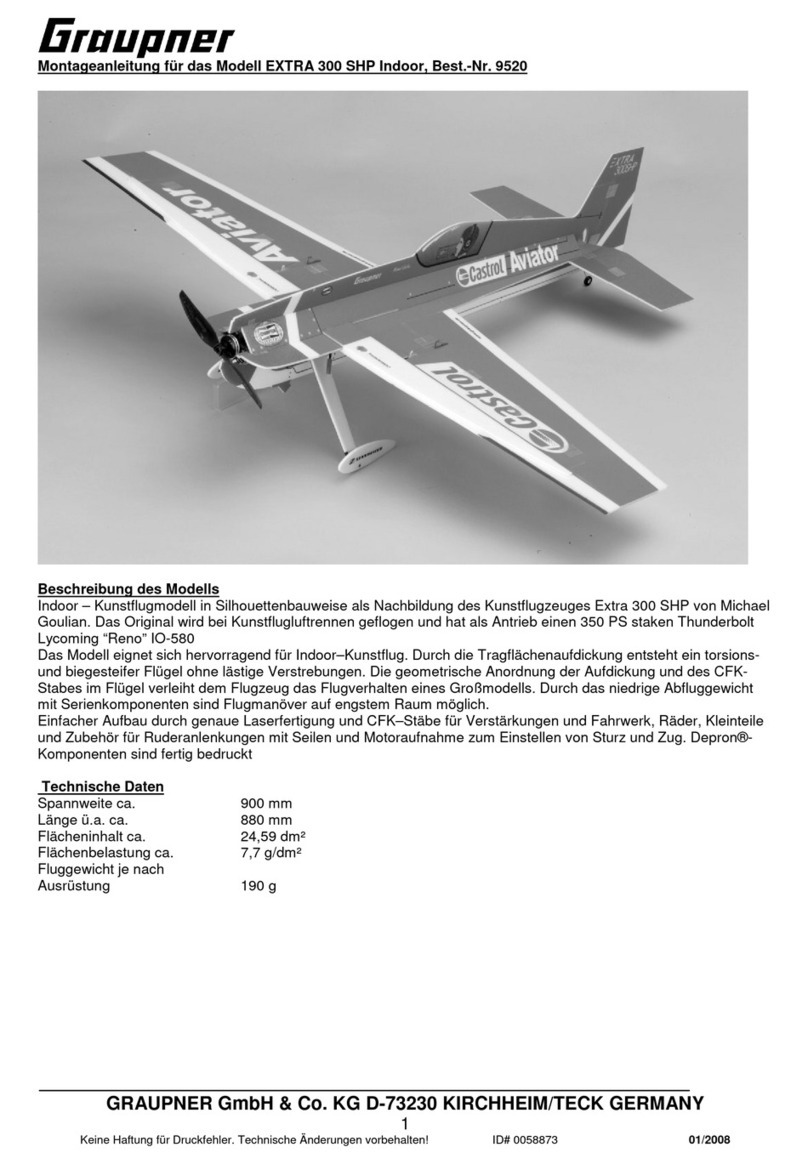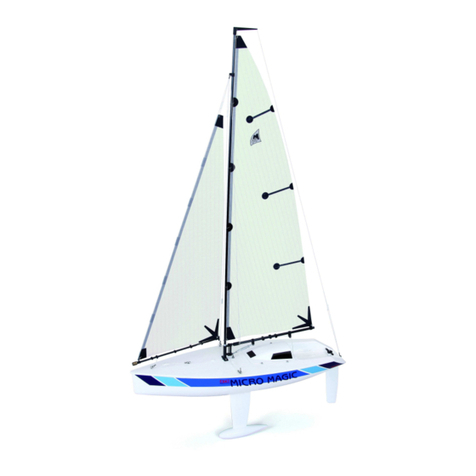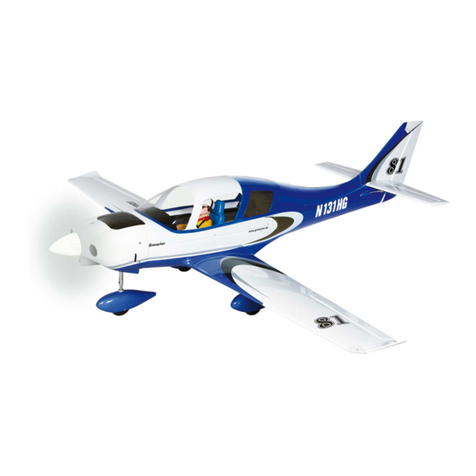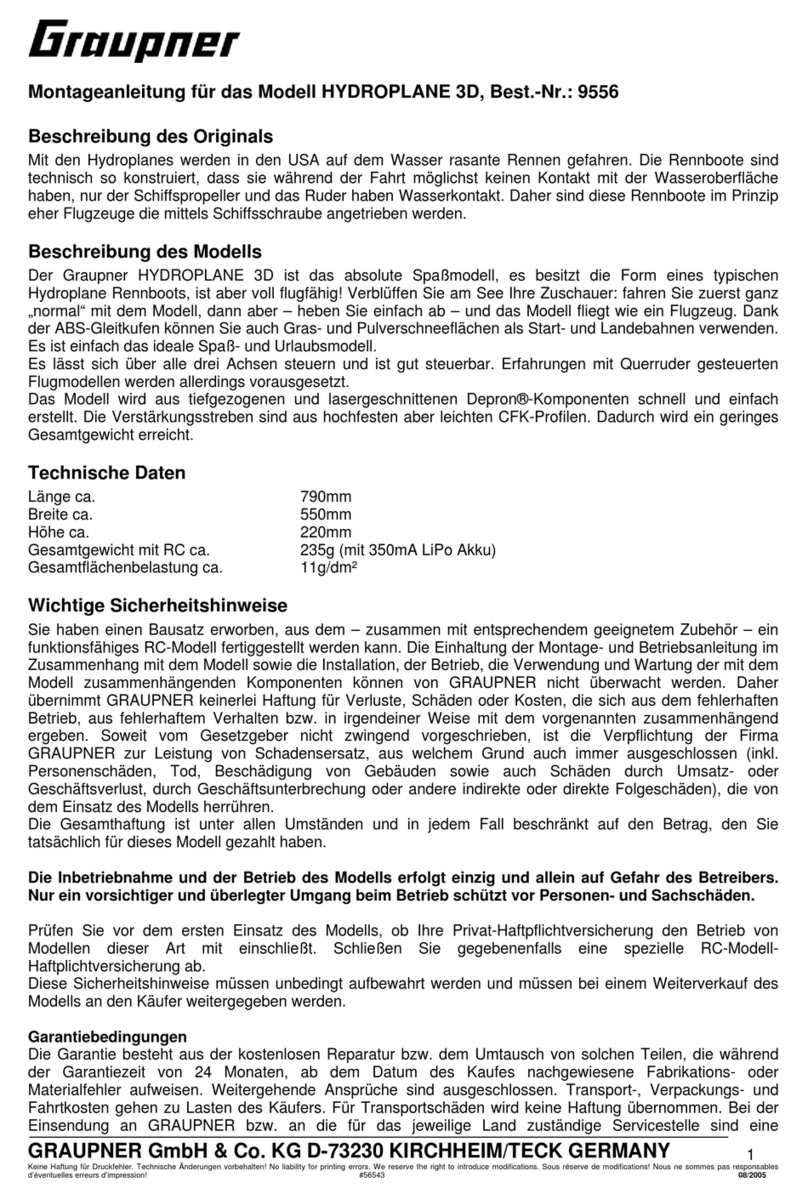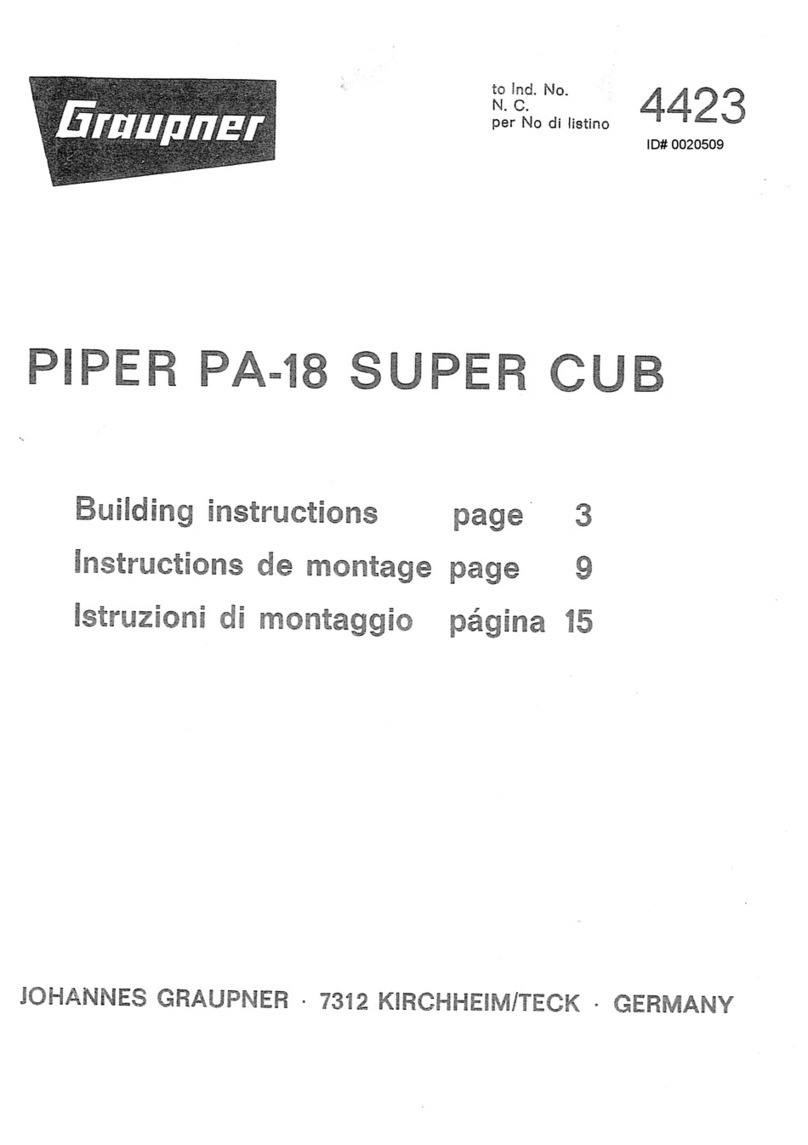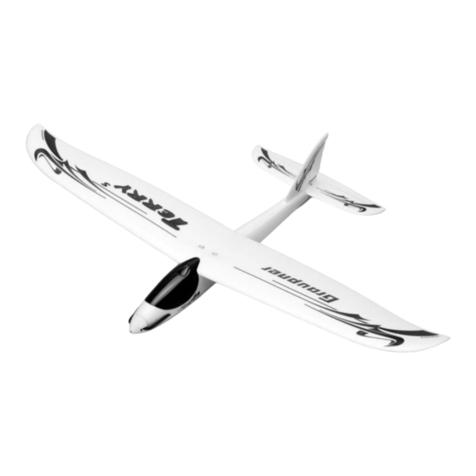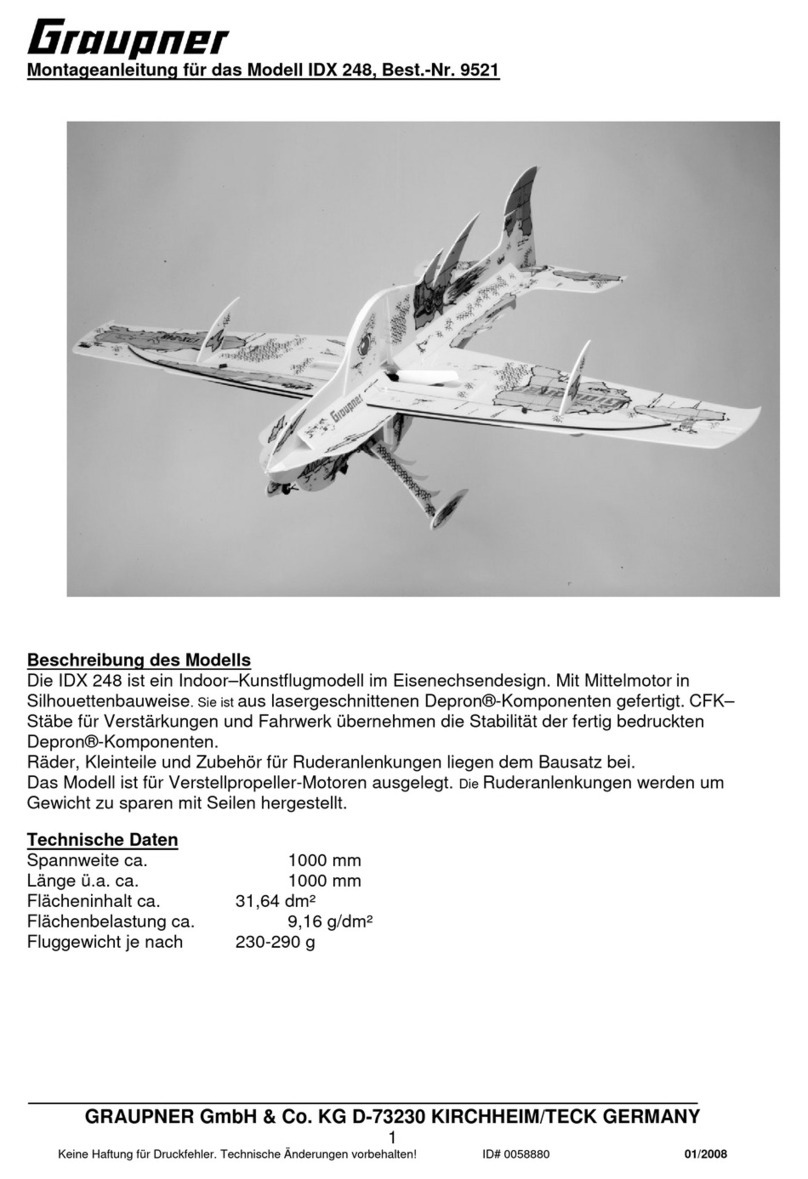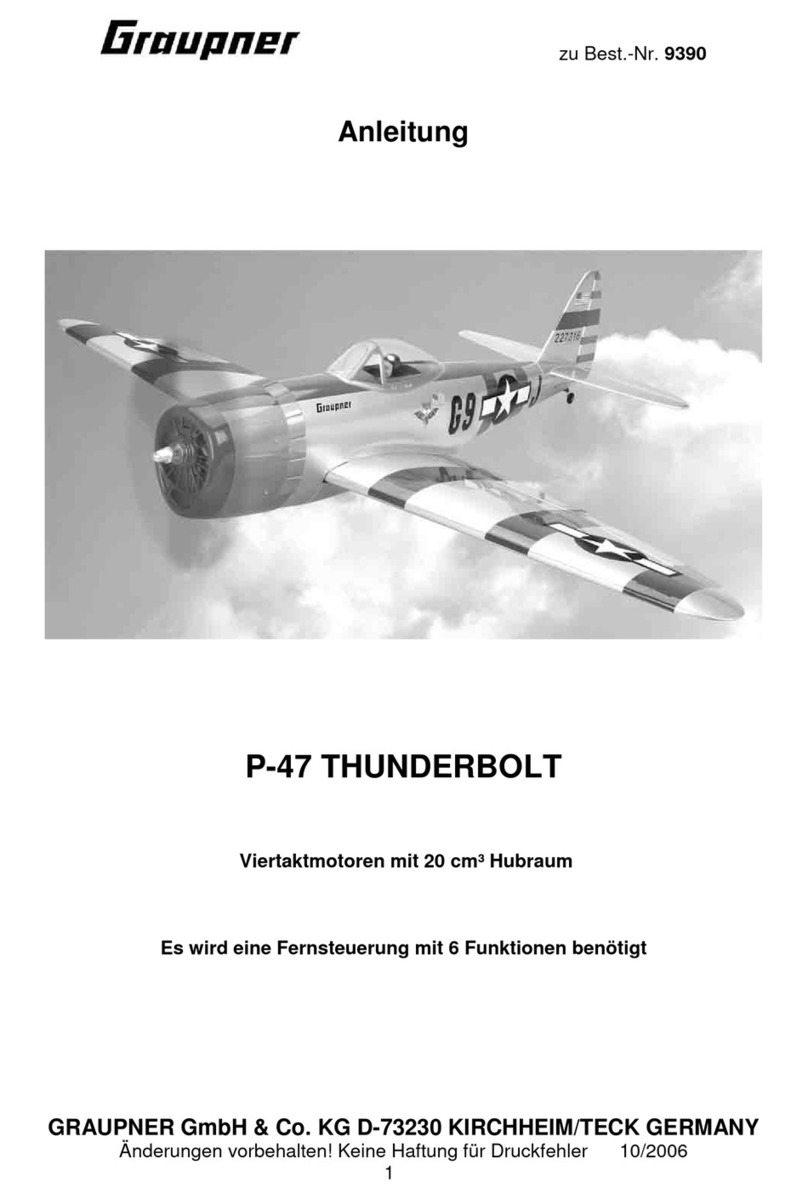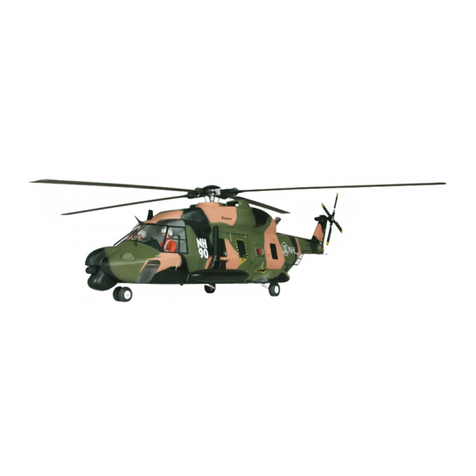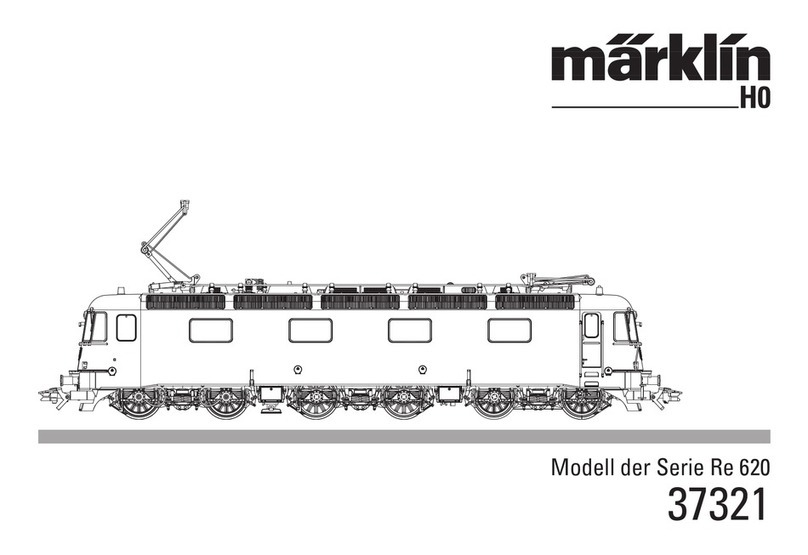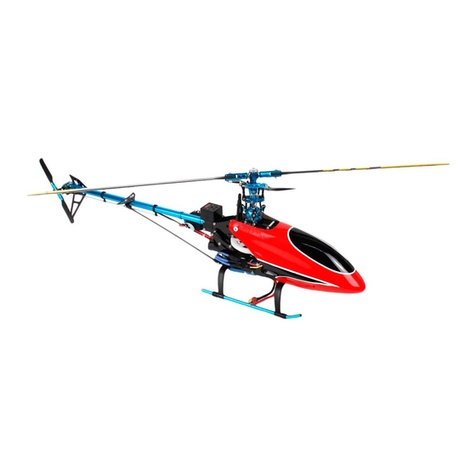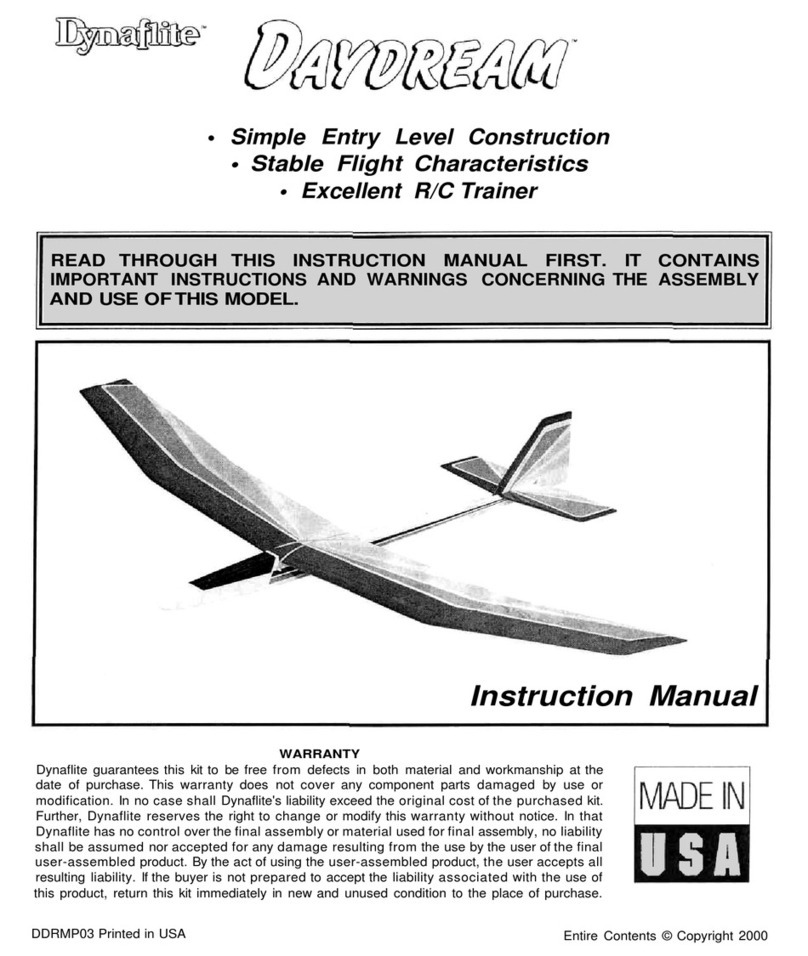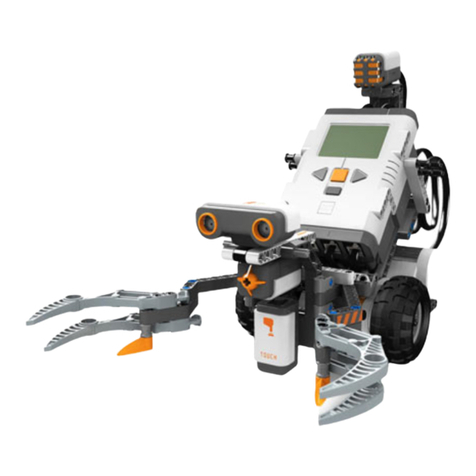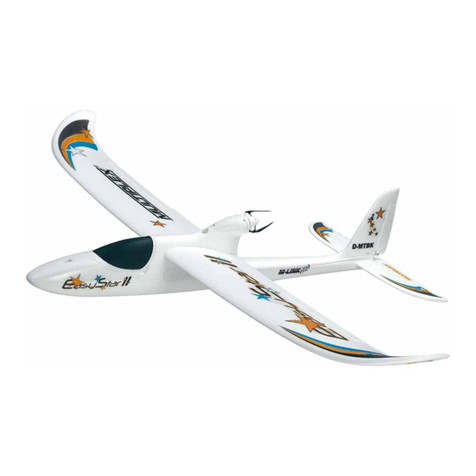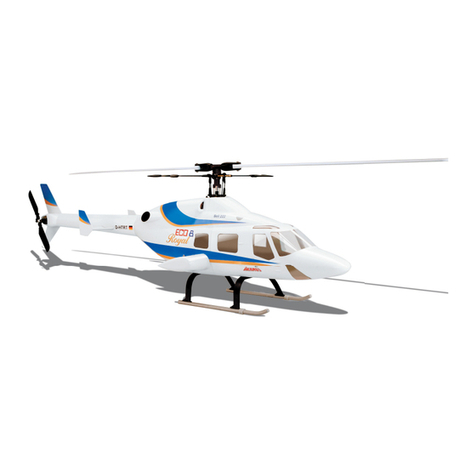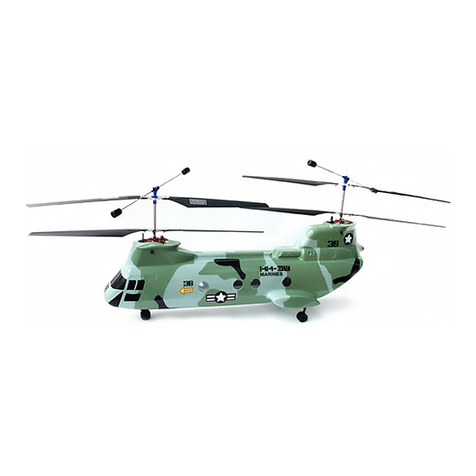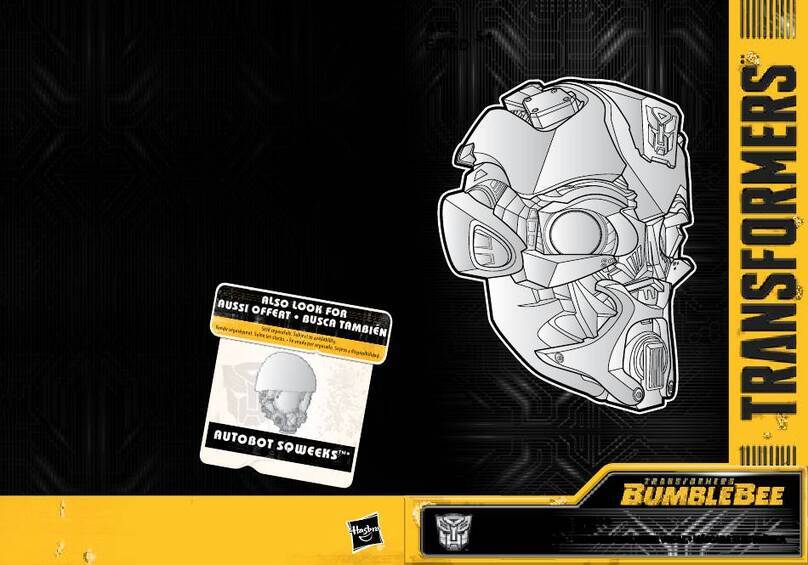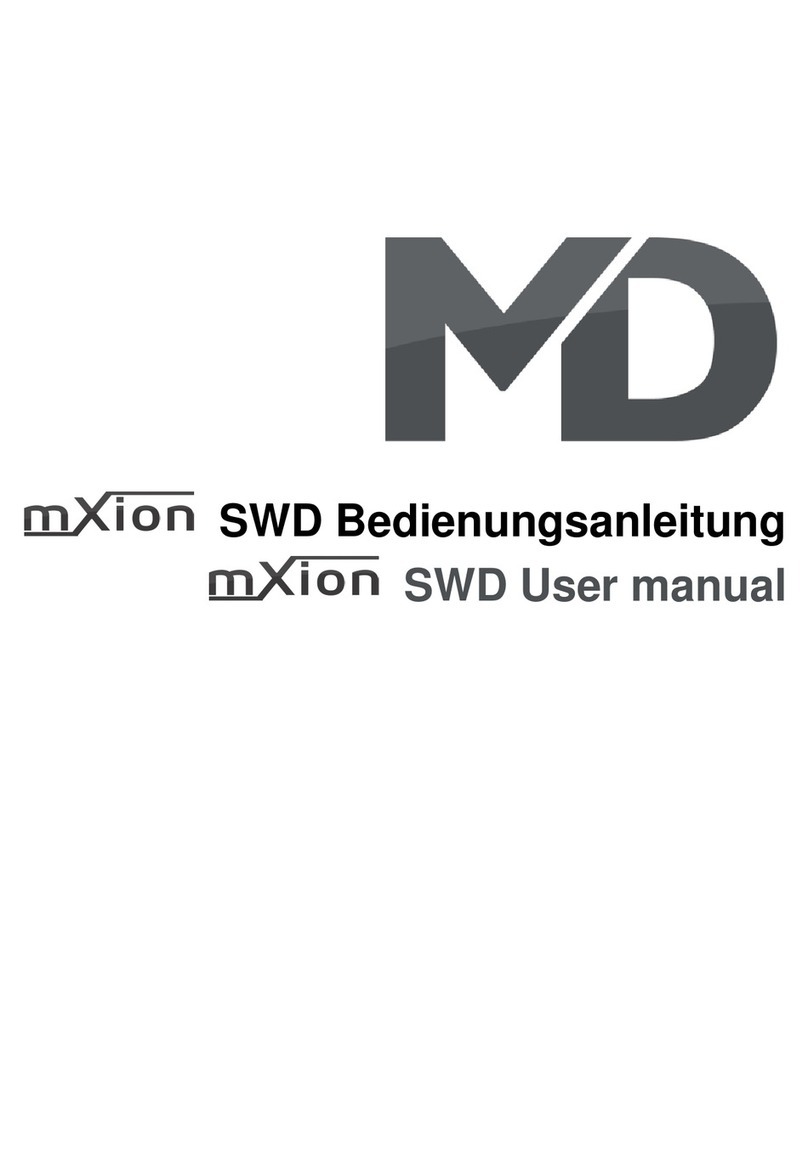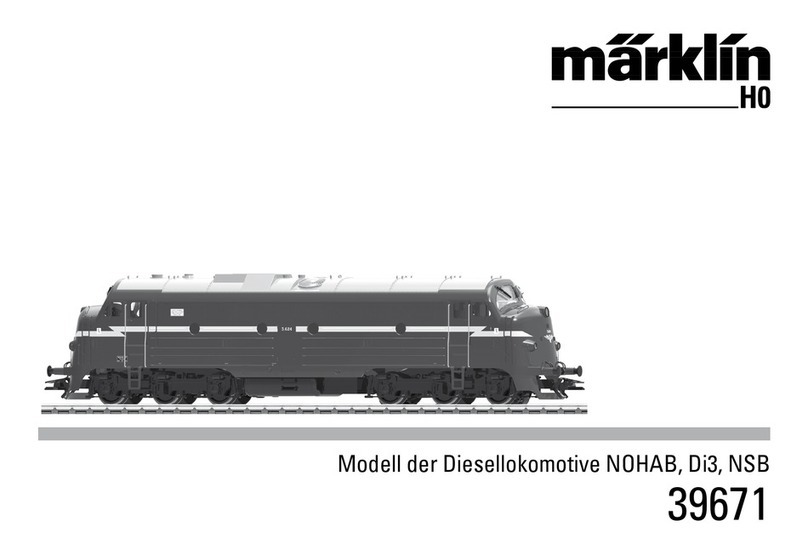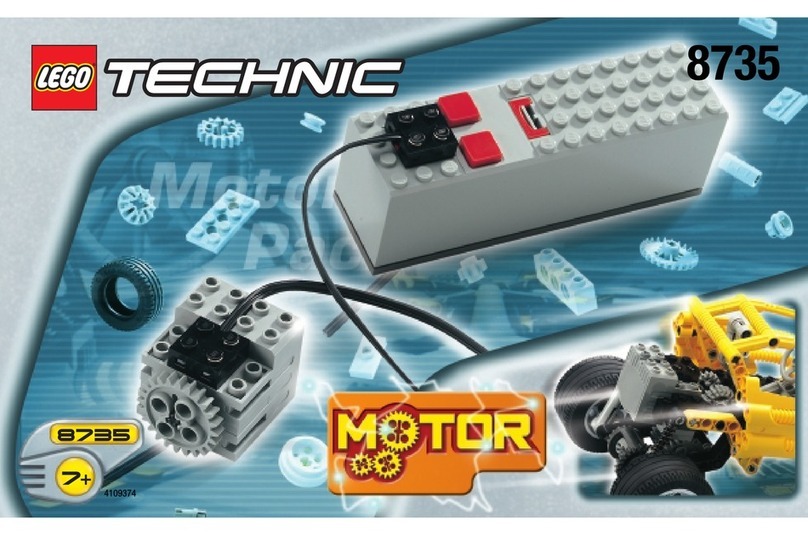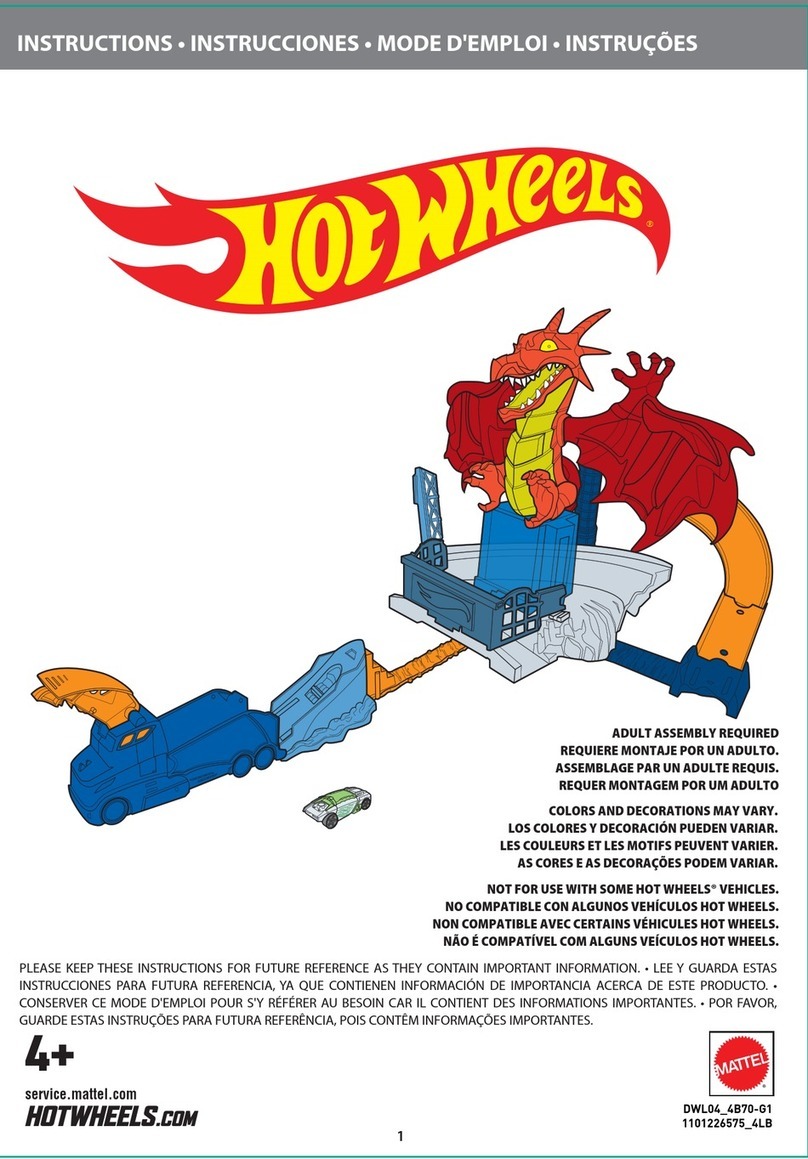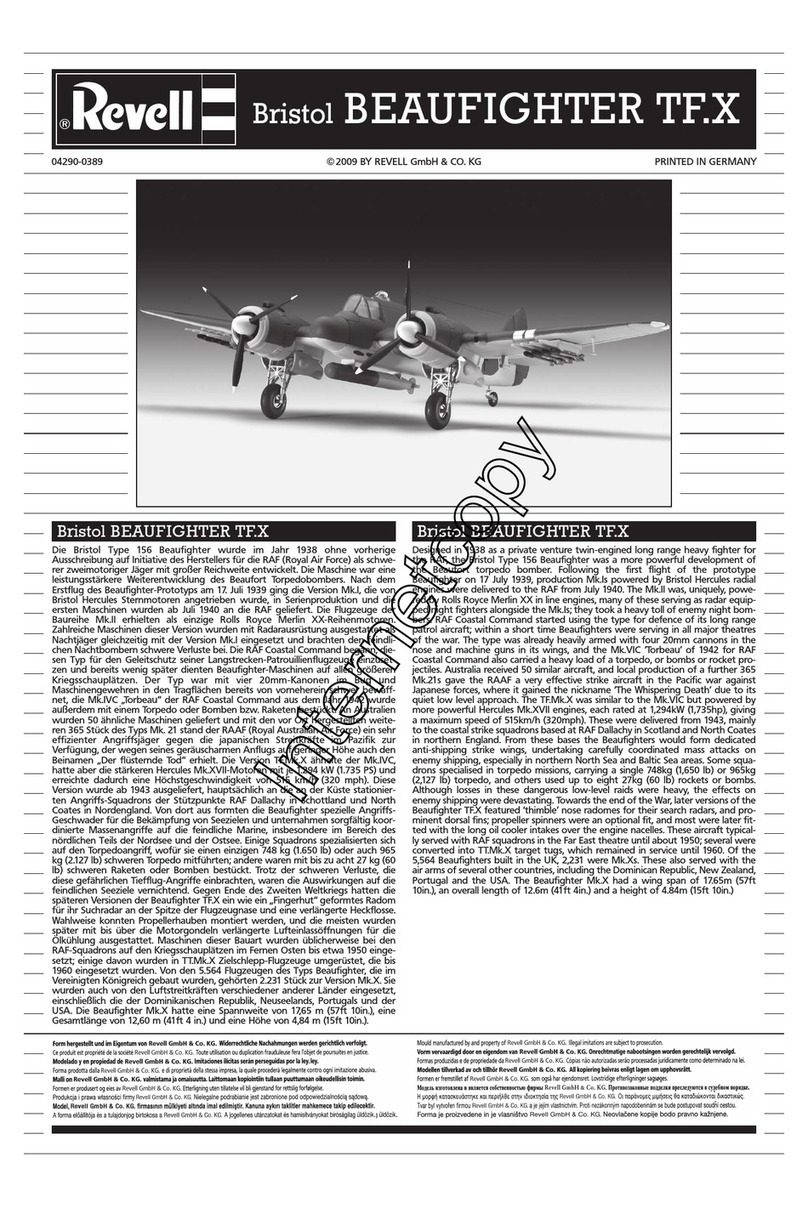
GRAUPNER GmbH & Co. KG D-73230 KIRCHHEIM/TECK GERMANY
Modifications reserved. No liability for printing errors. Id.-Nr. 0062414 3/2011
- 2 -
Please be sure to observe the Safety Notes in the Appendix of these operating instructions. If
you ever pass the model on to another person, the complete operating instructions must be
included with it.
Introduction
The CHIP is an ideal beginner’s hotline model, which offers maximum flying pleasure
for minimum building effort. The model is highly pre-fabricated, but the procedures
described in the following instructions must be carried out with the greatest care to
ensure that the model flies safely and well. The aircraft’s all-up weight must not
exceed 600 g.
RC system accessories
The following items are required in order to operate the model.
MX-12 2.4 GRAUPNER HoTT COMPUTER SYSTEM Order No. 4754
DES 261 BB servo (two required) Order No. 7903
ULTRAMAT 8 Order No. 6411
Transmitter charge lead Order No. 3022
Charge lead with BEC connector Order No. 3037
COMPACT FLY 15 BEC speed controller Order No. 7220
GRAUPNER LiPo flight battery, 3/850 11.1 V / 850 mAh Order No. 7621.3BEC
Essential tools and adhesives
Balsa knife Order No. 980
Screwdriver
Abrasive paper, 320-grit
Side-cutters
Mini flat-nose pliers
Open-ended spanner, 8 mm A/F, allen key, 1.5 mm A/F, allen key, 2 mm A/F
Paper scissors
Adhesive tape
Soldering iron, solder, heat-gun
Cyano-acrylate glue (“cyano”) Order No. 5821
Cyano activator Order No. 953.150
Building instructions
Please read right through these building instructions before you start construction, to
ensure that you have a clear understanding of the sequence of operations required.
Lay out all the components, tools and adhesives for each stage before you start
work, and prepare the model parts as described in the building instructions. When
assembling the components always work on a clean, smooth surface, or cover the
workbench with a layer of soft foam. Use cyano-acrylate and activator as adhesive.
We recommend that you apply the glue to one joint surface, and spray activator on
the mating surface. Take particular care to avoid adhesive running onto your hands
or the model’s surface; immediately wipe off any excess glue using paper towel.
Caution: cyano-acrylate must never come into contact with body parts. Take
particular care to avoid it getting in your eyes; we therefore recommend that
you wear goggles when handling cyano. Store the adhesive well out of the
reach of children. For safety reasons we recommend that you only use the
adhesive stated above.
